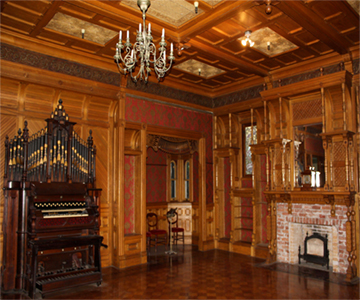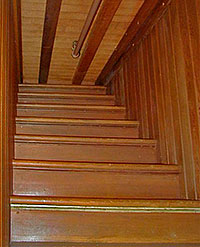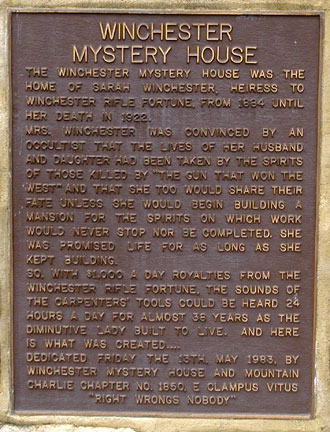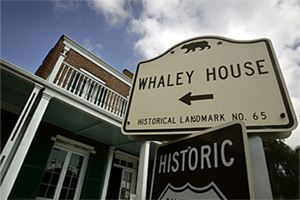 |
|
In the 1960s, the U.S. Commerce Department classified the Whaley House as haunted. The Travel Channel has also dubbed it America's most supernatural home (obviously, they're experts). Its earliest ghost was "Yankee" Jim Robinson, who was hanged on the site in 1852. When James Whaley built the house — which in the mid-19th century served as a granary, courthouse and general store — in 1857, he claimed to hear Robinson padding loudly through the halls. Whaley and his wife are also said to inhabit the house, announcing their presence with cigar smoke and perfume. |
| America's most famous residence is also allegedly one of its most haunted. According to lore, some of its inhabitants felt such ties to the seat of the American power that they chose to linger long after their deaths. If you believe the whispers, the ghost of Abigail Adams (wife of John) does laundry in the East Room, while Dolley Madison's spirit likes to lurk around the Rose Garden—and, of course, the Lincoln Bedroom may be the site of visits from Honest Abe. |
|
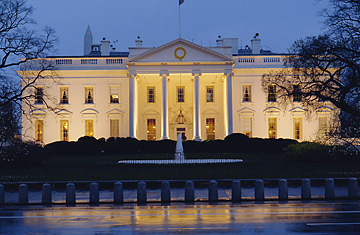 |
|
|
If this "mystery house" isn't actually haunted— and the U.S. Department of Commerce has certified that it is— it's still one of the spookier construction projects in history. After the death of her husband and child, Sarah Winchester (the wife of the rifle-maker's son) consulted a seer who proclaimed her family had been killed by the ghosts of those who died of bullets from her family's guns. The seer suggested that only perpetual construction on the family's mansion could mollify these spirits. So that's what Sarah Winchester ordered. Workmen labored on the property every hour of every day for 38 years. The 160-room estate, built entirely without the aid of blueprints, is truly bizarre: some of the creepier features are staircases to nowhere, doors that open onto brick walls or ten-foot drops, and a window with an etched-glass spider-web motif. |
| A former luxury ocean liner and war ship nicknamed the "Grey Ghost," the Queen Mary was purchased by the city of Long Beach in 1967, transformed into a hotel, and became a popular tourist attraction (a meal and a guided walk around the ship's paranormal hot spots can run up to $109). Among the ghosts reportedly still hanging around are a sailor who died in the ship's engine room, a "lady in white," and children who drowned in the ship's pool. |
|
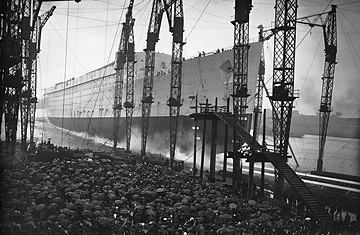 |
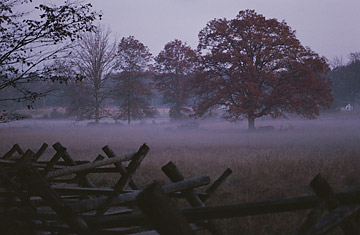 |
|
The battle of Gettysburg lasted for three days and was one of the bloodiest in American history; some 50,000 young men died in the conflict. With so many young men killed so violently, many believe the site is haunted by fallen soldiers unable to accept their untimely fate. These restless souls wander the Pennsylvania field, searching for their rifles and comrades, unaware that the battle is over. |
| Built in 1829 with castle-like walls and imposing guard towers, Eastern State Penitentiary in Philadelphia, Penn. was the first prison to institute solitary confinement. Prisoners lived alone, ate alone, and even exercised alone in individual yards. When an inmate left his cell, a guard covered his head with a hood so that he remained in confinement. Although the solitary system was quickly discarded due to overcrowding, Eastern State is widely believed to have caused mental illness among its prisoners. It operated as a regular prison from 1913 until it closed in 1970, during which time it housed both Al Capone and bank robber Willie Sutton. The prison was abandoned in 1971, and rumors of strange happenings have plagued the stone penitentiary ever since. Visitors to the prison—and there are many, for Eastern State is now a museum and Halloween haunted house—report footsteps in the yards, the sound of someone pacing in the cells, eerie noises, and lonely wails that drift through the cold, dark corridors. Cell Block 12 is famous for its disembodied laughter, and one guard tower appears, on some nights, to be occupied by a shadowy figure keeping watch over the empty prison. |
|
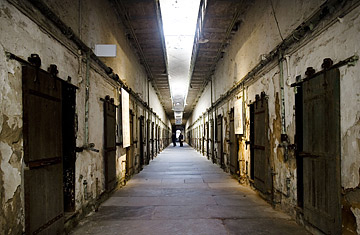 |
|







